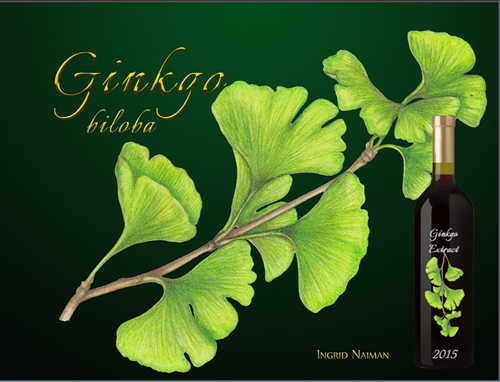![]()
Search
|
|
|
|

Ginkgo biloba 銀杏 Native to East Asia and is often grown in monasteries. Common name: Maidenhair Tree Part used: leaf Harvest: in late summer or early autumn before leaves turn yellow. |
||||
The tree is hardy to zone 4 but grows slowly. Both male and female plants are required in order to produce seed, but the fruit (on the female plant) smells like rancid butter so female trees are seldom used for ornamental purposes. In Chinese medicine, it was primarily the cooked seed that was used, but recent studies of the leaves suggest that they, too, have considerable medicinal benefits, including promoting circulation, especially to the brain. It is also used to treat tinnitus where the presumed cause is free radical damage or impaired circulation. The leaf contains a compound unknown in any other plant, ginkgolides. These have anti-allergenic actions that make ginkgo suitable for use in treating asthma. The most popular uses of ginkgo leaf today are for conditions related "cerebral insufficiency" characterized by loss of memory, dizziness, confusion, and anxiety.(1) Traditionally, it is used for many of the diseases common to elderly persons, such as deafness, macular degeneration, diabetic retinopathy, memory loss, and vertigo. However, due to the success in protecting workers at the Chernobyl nuclear disaster site, it is being studied more and more for its radioprotective properties. My interest in ginkgo began in 1962 when visiting Hiroshima and learning that six trees within 1-2 kilometers of the atomic bomb blast survived.
|
||||
|
||||
|
||||
*The material provided on this site is for informational purposes only. The site owner is not a medical doctor. Information provided is not intended to replace the services of health care professionals. The content and products discussed have not been evaluated by the Food and Drug Administration. The information on this site and the products discussed are not intended to diagnose, treat, cure, or prevent any disease.
